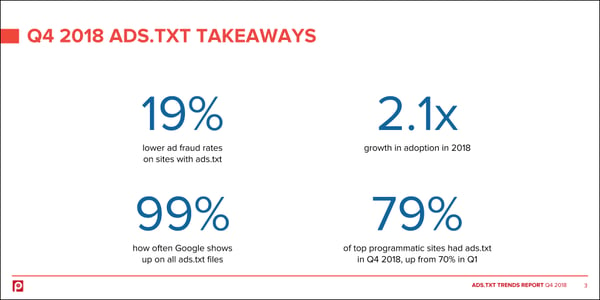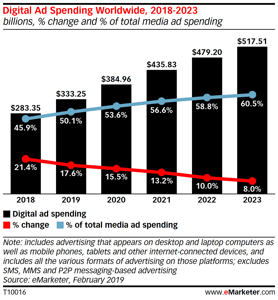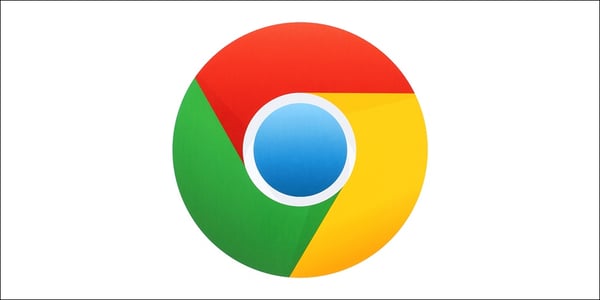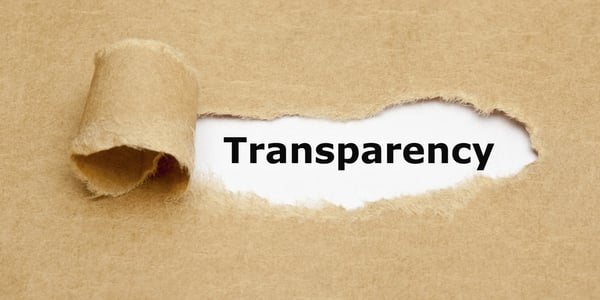
This week's review of ad fraud and quality in the digital advertising space.

Pixalate this week released the Q4 2018 Ads.txt Trends Report. The report features data and insights collected by Pixalate detailing the state of ads.txt adoption over the fourth quarter of 2018.

"In 2019, worldwide digital ad spending will rise by 17.6% to $333.25 billion," wrote eMarketer in its release of the 2019 Digital Ad Spend report. "That means that, for the first time, digital will account for roughly half of the global ad market."

"Unilever has setup a trusted network of online publishers and platforms to work closely with the company to help it clean up its digital advertising," wrote Mobile Marketing Magazine. "The aim of the network is to help Unilever combat fraud by giving it more control and visibility over where its ads are placed, ensuring that people view ads instead of bots."

"Agencies have already put the squeeze on their demand-side tech partners to be clear about margins and fees," wrote AdExchanger. "Now they’re coming after SSPs as well." AdExchanger added that "the agency push for transparency is starting to spur consolidation across the sell-side tech landscape, as buyers realize they can work with fewer partners and see better results."
*By entering your email address and clicking Subscribe, you are agreeing to our Terms of Use and Privacy Policy.
These Stories on Weekly Recaps
*By entering your email address and clicking Subscribe, you are agreeing to our Terms of Use and Privacy Policy.

Disclaimer: The content of this page reflects Pixalate’s opinions with respect to the factors that Pixalate believes can be useful to the digital media industry. Any proprietary data shared is grounded in Pixalate’s proprietary technology and analytics, which Pixalate is continuously evaluating and updating. Any references to outside sources should not be construed as endorsements. Pixalate’s opinions are just that - opinion, not facts or guarantees.
Per the MRC, “'Fraud' is not intended to represent fraud as defined in various laws, statutes and ordinances or as conventionally used in U.S. Court or other legal proceedings, but rather a custom definition strictly for advertising measurement purposes. Also per the MRC, “‘Invalid Traffic’ is defined generally as traffic that does not meet certain ad serving quality or completeness criteria, or otherwise does not represent legitimate ad traffic that should be included in measurement counts. Among the reasons why ad traffic may be deemed invalid is it is a result of non-human traffic (spiders, bots, etc.), or activity designed to produce fraudulent traffic.”

